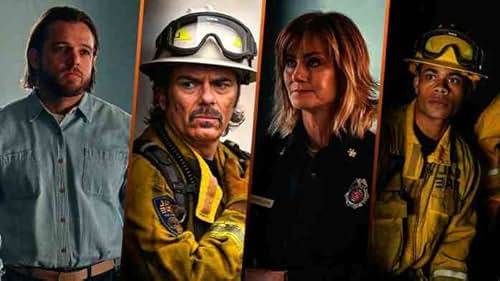
Firefighting on Screen: A Tradition of Spectacle
From classic shows like Emergency! to blockbusters like Backdraft, firefighting has long captured the imagination of audiences. The profession offers natural drama—life-or-death stakes, roaring flames, heroic rescues—but historically, accuracy often took a backseat to spectacle.
Fire Country, however, seeks to bridge that gap. While it doesn’t claim to be a documentary, the series clearly prioritizes realism in its portrayal of fire science, operations, and firefighter culture, all while delivering character-driven drama and narrative suspense. The result is a compelling balance that resonates with both general audiences and real-world first responders.
A Gritty and Grounded Look at Wildland Firefighting
Unlike many firefighter shows that focus on urban settings, Fire Country takes viewers into the unique and treacherous world of wildland fires—rural, forested terrains where conditions change rapidly and resources are often limited. This setting introduces viewers to tools and tactics not commonly seen in other shows: drip torches, hand crews digging fire lines, controlled burns, and coordination with air support units.
The show also features California’s inmate firefighter program, a real-world initiative where low-risk prisoners are trained and deployed to fight wildfires. Bode Donovan’s story as a prisoner-turned-firefighter offers a rare glimpse into this controversial but impactful program, making the series feel both unique and grounded in reality.
Real Techniques, Real Terminology

Fire Country writers and producers reportedly consulted with Cal Fire experts to ensure authenticity in many aspects of the show. From the use of terminology (“strike team,” “red flag warning,” “mop-up”) to the strategies used in backburning and containment, the series integrates industry-accurate language and tactics that add depth without overwhelming the audience.
Scenes where crews anchor a fire, perform evacuations, or engage in high-risk rescues feel true to life, not just staged for cinematic flair. These touches give the series credibility and show a respect for the profession that many dramas gloss over.
Dramatic License: When Reality Bends for Storytelling
Of course, Fire Country still operates within the realm of drama. Some elements are understandably exaggerated to keep the pace exciting. Fires erupt faster than they would in reality; rescue scenes are compressed; characters often recover from injuries that would sideline real firefighters for months.
Additionally, personal storylines—affairs, family drama, betrayals—sometimes take center stage, veering into soap-opera territory. But these moments serve a purpose: they humanize the characters, giving emotional weight to their choices and creating stakes beyond the fireline.
What’s commendable is that even when the show leans into fiction, it rarely does so at the expense of respecting the job’s dangers, discipline, and difficulty.
Humanizing the Hero: Real Emotions Behind the Gear
Another way Fire Country maintains realism is through its character development. The emotional toll of firefighting—loss, fear, adrenaline, survivor’s guilt—is not only acknowledged but made central to the plot.
Characters like Vince and Sharon Leone embody the challenges of long-term service: strained marriages, tough calls, and administrative pressures. Meanwhile, younger crew members face their own emotional battles, offering a layered look at the profession across generations.
This emotional realism is perhaps the show’s greatest strength. It refuses to reduce firefighters to one-dimensional heroes; instead, it shows them as complex individuals shaped by the fires they fight—both literal and metaphorical.
Educating the Audience Without Preaching
In balancing realism and drama, Fire Country accomplishes something rare: it educates viewers without feeling like a public service announcement. Audiences learn about fire behavior, weather conditions, evacuation protocols, and even climate-related issues—all organically woven into the story.
This subtle educational value not only elevates the show’s authenticity but also deepens viewer appreciation for the real men and women doing this work every day.
Conclusion: Where Heat Meets Heart
Fire Country proves that a TV drama can be thrilling and respectful, entertaining and informative. By grounding its narrative in real-world firefighting practices while embracing the emotional highs and lows of serialized drama, the series strikes a rare balance that appeals to both civilians and professionals alike.
In doing so, it honors the bravery, complexity, and humanity of firefighters—not just as action heroes, but as people who walk through fire in more ways than one.
